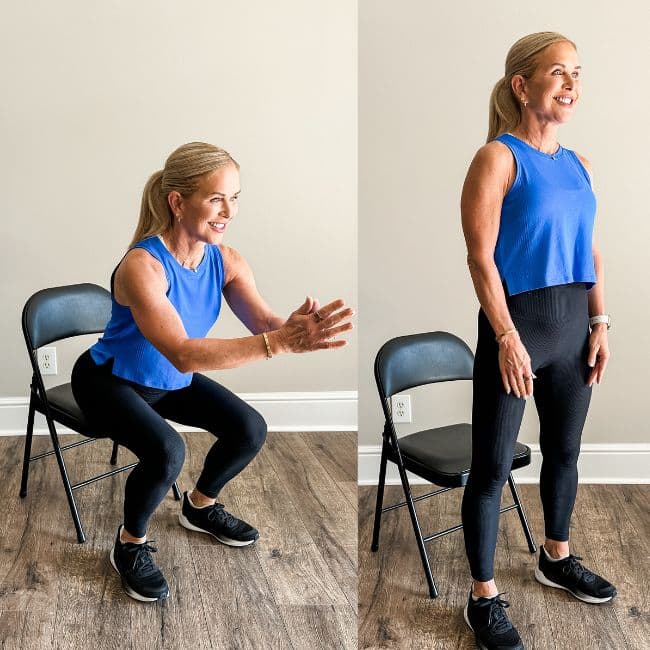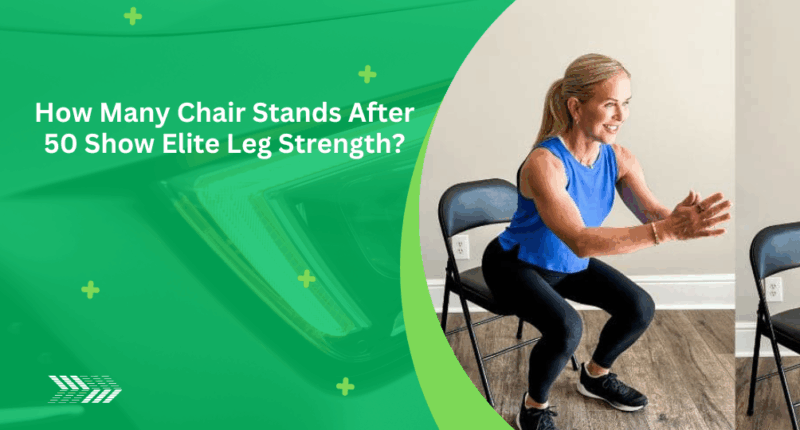- The Chair Stand Test measures essential lower-body strength that influences mobility and fall risk.
- Performing 12 or more chair stands in 30 seconds after age 50 indicates elite leg strength.
- Proper form during the test is vital for accurate results.
- Regular strength and balance exercises can significantly improve your chair stand performance.
- Enhanced leg strength improves overall independence and reduces the risk of injury.
If you can do a high number of chair stands after age 50, your leg strength is likely exceptional—a key marker of overall mobility and health. This simple yet telling exercise, known as the Chair Stand Test, provides valuable insight into lower-body strength, balance, and function, all critical for maintaining independence as we age.

What Is the Chair Stand Test? Understanding Its Purpose and Benefits
The Chair Stand Test is a practical fitness assessment commonly used by health professionals to evaluate leg strength and endurance. It involves sitting in a chair and standing up fully, repeatedly, within a specific timeframe—usually 30 seconds. The number of successful stands completed reveals your muscle power in the lower limbs. Since leg strength significantly influences daily activities such as climbing stairs, walking, and preventing falls, this test is both a predictor of functional ability and a tool for identifying risk factors related to physical decline. Research shows that completing 12 or more stands in 30 seconds after age 50 signals superior leg strength, translating to better balance and mobility, which correlates with reduced fall risk and enhanced quality of life.
How to Do the Chair Stand Test Correctly: Step-by-Step Guide for Accurate Assessment
Performing the Chair Stand Test with correct form is crucial for a reliable measure of leg strength. Begin seated on a standard chair with your feet flat on the floor, shoulder-width apart. Cross your arms over your chest to avoid using your arms for leverage. When ready, rise to a full standing position, then sit back down completely. Repeat this motion as many times as safely possible within 30 seconds. Maintaining an upright posture and controlled speed ensures the test targets your leg muscles effectively. Health guidelines emphasize caution; if you experience pain or dizziness, stop immediately and consult a medical professional.
Why the Chair Stand Test Works: The Science Behind This Simple Yet Powerful Exercise
This test works because it challenges the primary muscles responsible for standing—mainly the quadriceps, hamstrings, and gluteal muscles—under time constraints that require both strength and endurance. Unlike isolated strength tests, the functional nature of repeatedly standing up from a chair mirrors daily movements, integrating muscle coordination, joint mobility, and cardiovascular effort. From a physiological standpoint, leg muscles are among the largest muscle groups, and their strength is a major determinant of overall metabolic health. Numerous studies indicate that chair stand performance is linked to longevity, lower risk of chronic diseases such as diabetes, and greater ease in performing everyday tasks.
How to Improve Your Chair Stand Test Score: Effective Strategies to Build Leg Strength After 50
Improving your score involves a combination of targeted exercise, consistency, and healthy lifestyle habits. Strength training exercises focusing on lower-body muscles can yield noticeable progress within weeks. Examples include squats, lunges, and step-ups, performed with or without added weights depending on fitness level. Incorporating balance training and flexibility exercises ensures joint safety and muscle efficiency during movement. Additionally, maintaining a balanced diet rich in protein supports muscle repair and growth. Gradually increasing intensity and frequency of practice sessions helps build stamina, allowing more chair stands to be performed during the test. Physical therapists and trainers often recommend starting with 2-3 sessions per week, combining resistance and aerobic work.

Real-Life Examples and Statistics Supporting Chair Stand Test Relevance
Consider Susan, a 56-year-old teacher who struggled with balance when walking on uneven surfaces. After integrating leg-strengthening exercises tailored to improve her chair stand ability, she increased her stands from 8 to 15 within two months. This boost in muscle power reduced her risk of falls and enhanced her confidence during daily activities. According to the National Institute on Aging, only 35% of adults over 50 achieve 12 or more chair stands in the standard timeframe, underscoring how exceptional leg strength remains a valuable and somewhat rare marker of physical health in this age group.
Also Read | Best Time to Eat Protein for Muscle Growth: Before or After?









